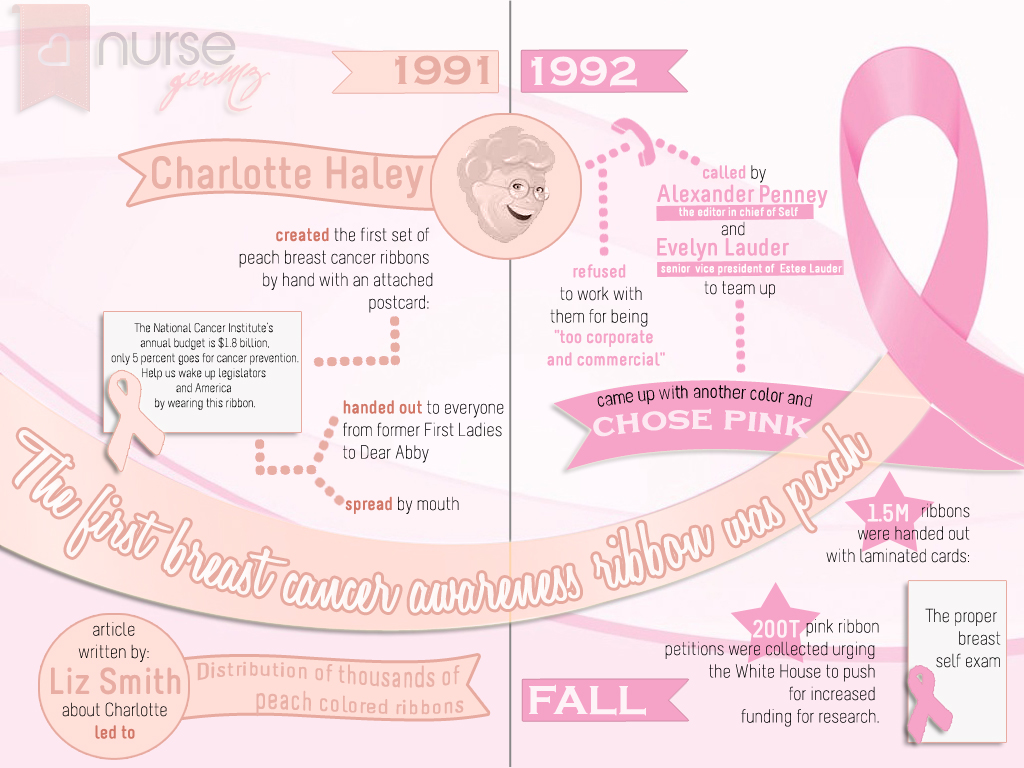
History of the Original Breast Awareness Ribbon
The pink ribbon has already been known as a symbol connoting breast cancer awareness. October, on the other hand, is Breast Cancer Awareness Month, which is an annual campaign to heighten attention and support awareness for early detection, treatment and also the palliative care of this disease.
To estimate, we have been marking our calendars for Breast Cancer Awareness Month for 26 years now but did you know that the pink ribbon symbol did not actually come about until around 19 years ago? Have you even wonder how did the ribbon come from?
The idea behind the pink breast cancer ribbon is that it symbolizes femininity, peace, youth, a sense of calm, and health and yet, the first breast cancer ribbon was not pink.
Charlotte Haley created the original breast cancer awareness ribbon
It was in the year 1991 when Charlotte Haley created peach-colored ribbon loops by hand at her dining table. Being a survivor of breast cancer who was one of four generations of women that had already fought with the disease, her ribbons served as a demand for its prevention and greater accountability. She personally handed out the peach ribbons in sets of five at her local grocery stores to everyone even from former First Ladies to Dear Abby. It was attached to postcared with a message:
The National Cancer Institute’s annual budget is $1.8 billion, only 5 percent goes for cancer prevention. Help us wake up legislators and America by wearing this ribbon.
It was spread by mouth but not until Liz Smith wrote an article regarding Charlotte Haley’s advocacy when the distribution of peach-colored ribbons reached to thousands.
Alexander Penny and Evelyn Lauder chose PINK, a color that was merely peachy
In the year 1992, Alexander Penny of Self and Evelyn Lauder of Estée Lauder approached Charlotte Haley to relinquish the concept of the ribbon and give her national attention but they were turned down for being too corporate and commercial.
However, their willingness to do a ribbon did not stop them after being told by their lawyers to just come up with another color and permission to use Haley’s idea wasn’t necessary. So, they chose pink.
While Charlotte Haley personally handed her message out, the Estée Lauder Company, on the other hand, went directly to their makeup counters with 1.5 million ribbons that is accompanied with a breast self-exam card. They had also collected more than 200,000 pink ribbon petitions to urge the White House asking for increased funding for breast cancer research.
Peach or Pink – The Ribbons Are Here To Stay
From then on, pink ribbons have entered politics, and changed the way corporations, legislators, and everyday people communicate their allegiance to a cause. Though the original peach ribbon humbly passed out for free at a supermarket, which faded and soon disappeared, it was enough to ignite a new awareness that has caused a dramatic increase in money spent on breast cancer research that has now estimated to be in the hundreds of millions. Evelyn Lauder also took a great part in founding the Breast Cancer Research Foundation in which 91.8% of its funds goes to breast cancer research and public awareness campaigns.
Happy Breast Cancer Awareness Month, Nurses!




